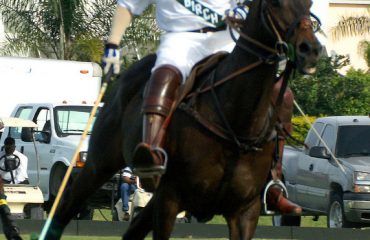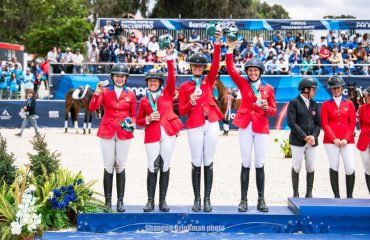
By Margie Sugarman
I have two daughters, one of whom has ADHD. They both love riding and competing. What’s interesting is that their “issues” regarding focusing, though quite different, have been addressed by understanding their focusing techniques. Could you explain the theory behind “attentional field focus,” as my one daughter’s specialized riding instructors calls it?
Impulsivity, inattentiveness, hyperactivity—these are characteristics that impact the teaching of many riders, the learning of many riders, the lives of many riders.
Your daughter has ADHD, which is a common brain developmental disorder that impacts approximately 10 million people in the United States. This equals about 7-8% of student athletes. Understanding the disorder and its impact on the rider is paramount in helping them achieve success. It’s well documented that the individual who has ADHD, when able to do what they love, can and does excel. The difficult dilemma is in how to help them stay focused when repetition is necessary, when certain exercises can be boring but necessary and when the student wants to just do the fun stuff and loses their motivation to do less stimulating things like flat work.
Whether one has ADHD or not, it’s impossible to participate and be successful in any sport without the ability to focus. It has been said that in athletics, focus is the most misunderstood factor.
When you think about that word, what comes to mind? The ability to stare at something? The ability to keep thoughts out of your head other than what you’re doing? The ability to not let other things get in the way of the task at hand?
Let’s start with a very important term: attentional field. This is a term that applies to everything inside of you, such as your emotions, thoughts and physical sensations. It also includes everything outside of you, such as the sounds and sights on which you can focus. In other words, attentional field encompasses all our senses, both internal and external. Focus is the ability to attend to both the external and internal cues in one’s attentional field.
There is a much more specific term, prime focus, that involves paying attention to only performance-relevant cues in one’s attentional field. These performance-relevant cues include techniques, tactics, time and other cues that have an impact on the goal or desired end result. For example, take a rider who walks the jumper course prior to competing. She goes from reading the course diagram to walking the course, to riding the track. The rider first internally focuses to select the best approach in riding the course. The walk then widens the external focus to survey the best approach to the course challenges. The rider then mounts and begins riding the course. As she rides the course, she narrows her focus to find the best approach over each jump to save time and ultimately beat the competition—reacting to the cues, both internal and external, as the course progresses.
The real issue is how poor focus—focusing on performance-irrelevant cues in the attentional field—impacts results. There are two types of such cues: irrelevant cues—thoughts that distract you, like what you’re having for dinner or the homework you must finish; and interfering cues—thoughts that directly hurt one’s performance, such as anxiety, negative thoughts and self-talk.
How one focuses is important. In other words, a focus style is determined by the cues one prefers responding to. Some athletes prefer responding to certain cues and others to totally different cues. These are either:
- External focus style: These athletes tend to become anxious, think too much and become negative. They do best when they only focus on their sport when they’re about to practice or compete. At all other times, it’s best for them to broaden their focus and involve their minds in other thoughts when they aren’t performing, like listening to music when they aren’t walking a course or when they’re waiting to ride.
- Internal focus style: These athletes perform best when they are totally immersed in and focused on their sport during practice and competition. Their focus must be kept narrow and directed at what they’re going to do. These individuals are easily distracted by what’s going on around them. If they talk about non-horse topics, they tend to lose focus and will have difficulty re-focusing on their riding and what must be done when it’s time to mount up.
All riders should ask themselves, “When have I performed my best? Was I totally focused on what was going on around me, or was I doing other things that were holding my attention?” Then ask what you were doing prior to performing your worst.
Understanding focus style is imperative to handling the pressure of performing, in a lesson or in the show ring. We all have a preferred style of learning, interacting with others and approaching challenging situations. Understanding the way we think will help us to accomplish our goals. Sharing who you are and how you are—including your focus style and what’s going on in your attentional field—will help your trainer guide you in reaching your riding goals. It’s great to know what makes you tick—in riding as well as in life.
Remember, there are sport psychologists, therapists and sport consultants who are there to help you clarify and develop focusing techniques, should you feel the need for a few pointers.
Photo by Ali Kelman












